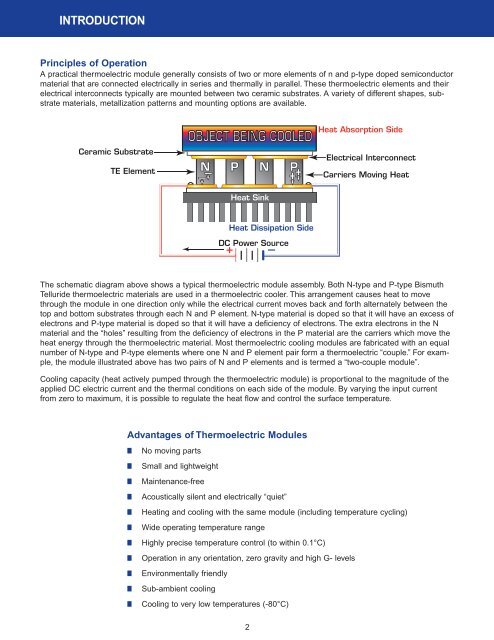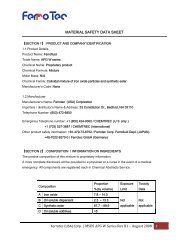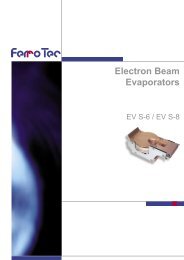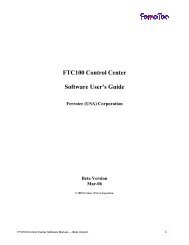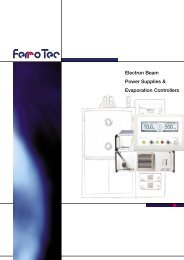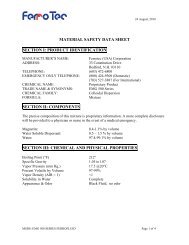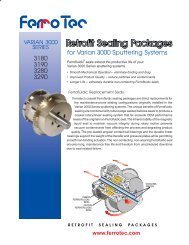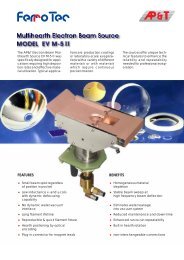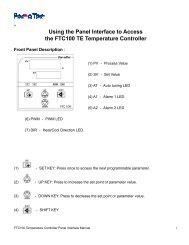Thermoelectric Module Product Selection Guide - Ferrotec
Thermoelectric Module Product Selection Guide - Ferrotec
Thermoelectric Module Product Selection Guide - Ferrotec
You also want an ePaper? Increase the reach of your titles
YUMPU automatically turns print PDFs into web optimized ePapers that Google loves.
INTRODUCTION<br />
Principles of Operation<br />
A practical thermoelectric module generally consists of two or more elements of n and p-type doped semiconductor<br />
material that are connected electrically in series and thermally in parallel. These thermoelectric elements and their<br />
electrical interconnects typically are mounted between two ceramic substrates. A variety of different shapes, substrate<br />
materials, metallization patterns and mounting options are available.<br />
The schematic diagram above shows a typical thermoelectric module assembly. Both N-type and P-type Bismuth<br />
Telluride thermoelectric materials are used in a thermoelectric cooler. This arrangement causes heat to move<br />
through the module in one direction only while the electrical current moves back and forth alternately between the<br />
top and bottom substrates through each N and P element. N-type material is doped so that it will have an excess of<br />
electrons and P-type material is doped so that it will have a deficiency of electrons. The extra electrons in the N<br />
material and the “holes” resulting from the deficiency of electrons in the P material are the carriers which move the<br />
heat energy through the thermoelectric material. Most thermoelectric cooling modules are fabricated with an equal<br />
number of N-type and P-type elements where one N and P element pair form a thermoelectric “couple.” For example,<br />
the module illustrated above has two pairs of N and P elements and is termed a “two-couple module”.<br />
Cooling capacity (heat actively pumped through the thermoelectric module) is proportional to the magnitude of the<br />
applied DC electric current and the thermal conditions on each side of the module. By varying the input current<br />
from zero to maximum, it is possible to regulate the heat flow and control the surface temperature.<br />
Advantages of <strong>Thermoelectric</strong> <strong>Module</strong>s<br />
■ No moving parts<br />
■ Small and lightweight<br />
■ Maintenance-free<br />
■ Acoustically silent and electrically “quiet”<br />
■ Heating and cooling with the same module (including temperature cycling)<br />
■ Wide operating temperature range<br />
■ Highly precise temperature control (to within 0.1°C)<br />
■ Operation in any orientation, zero gravity and high G- levels<br />
■ Environmentally friendly<br />
■ Sub-ambient cooling<br />
■ Cooling to very low temperatures (-80°C)<br />
2


